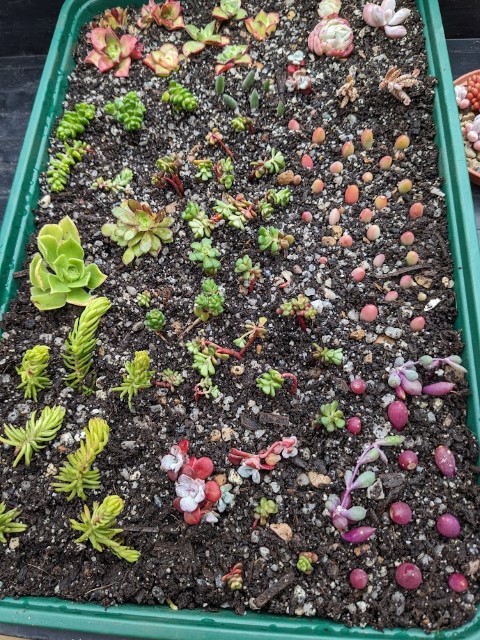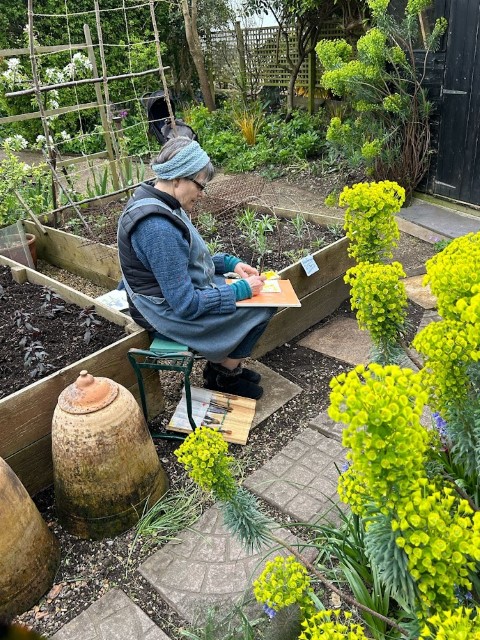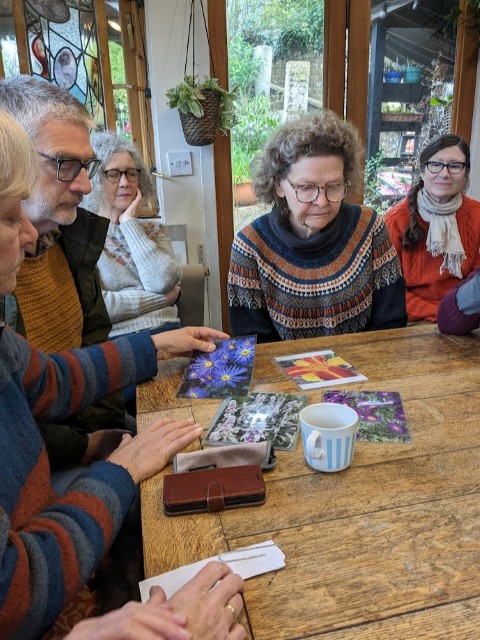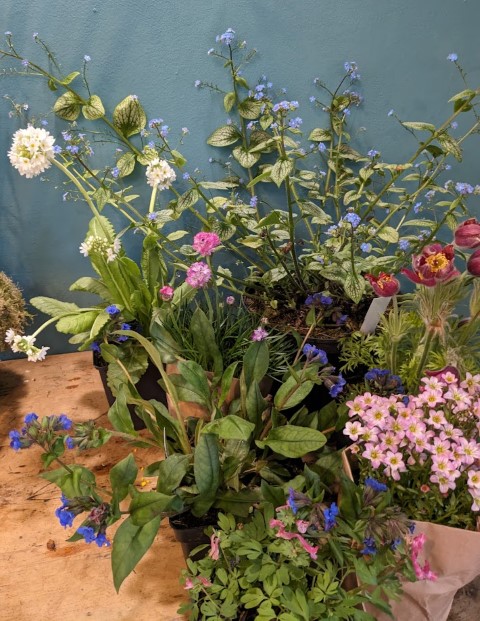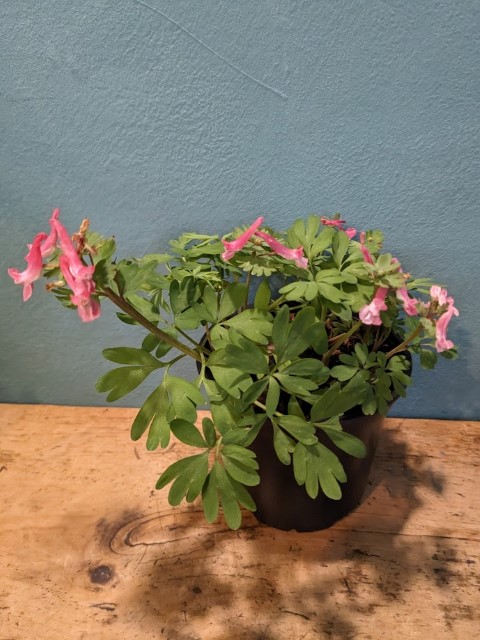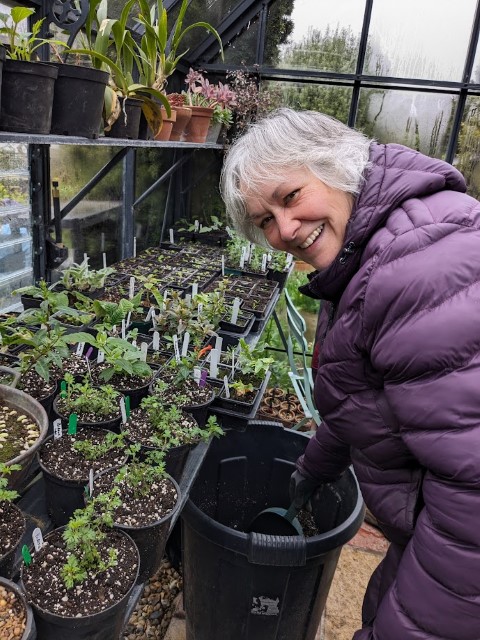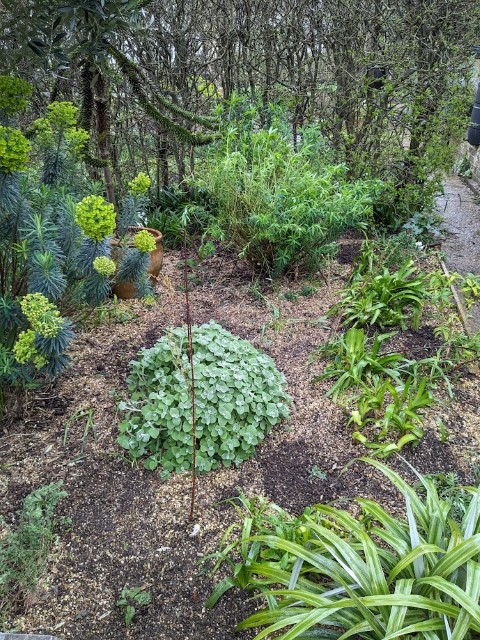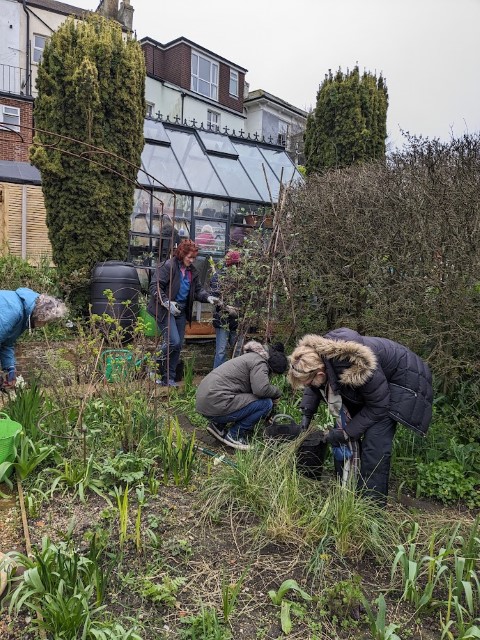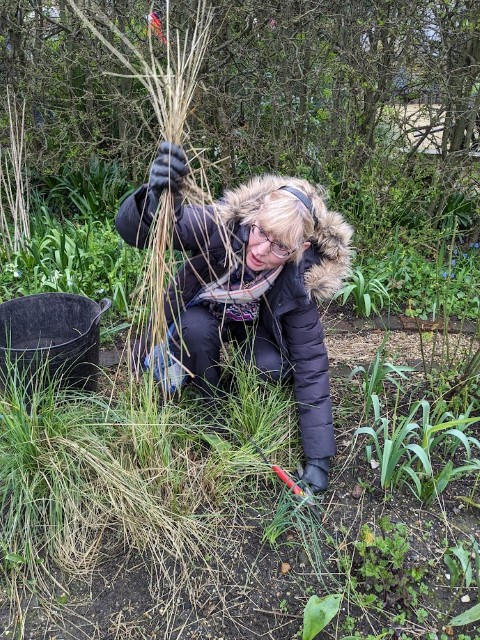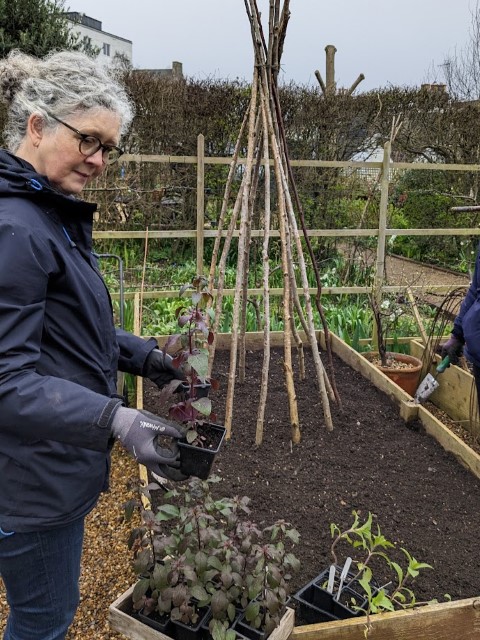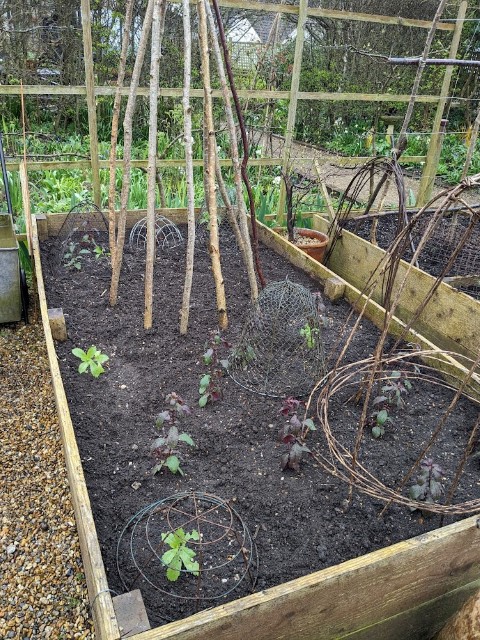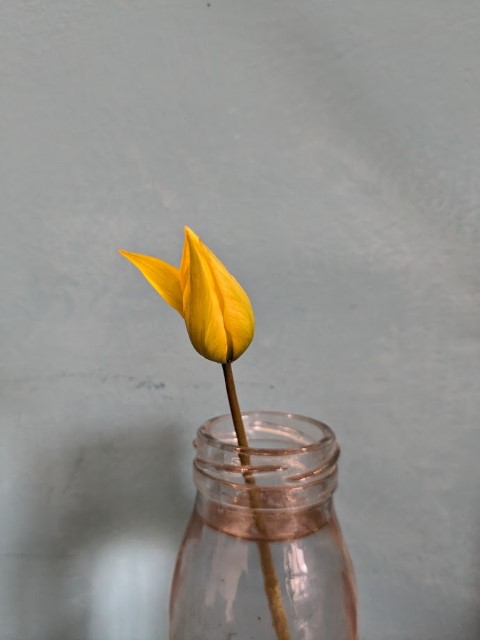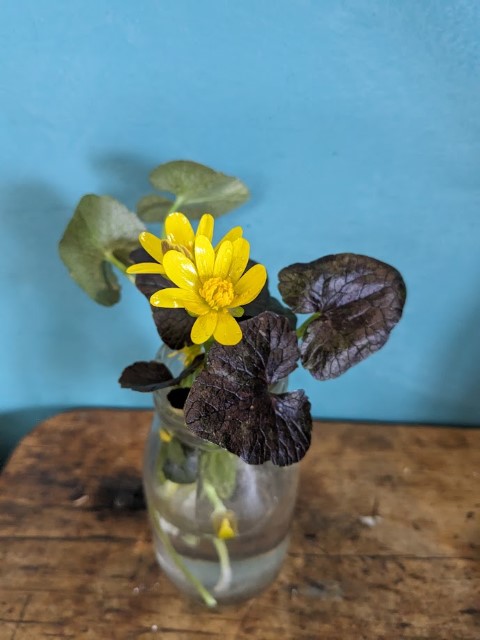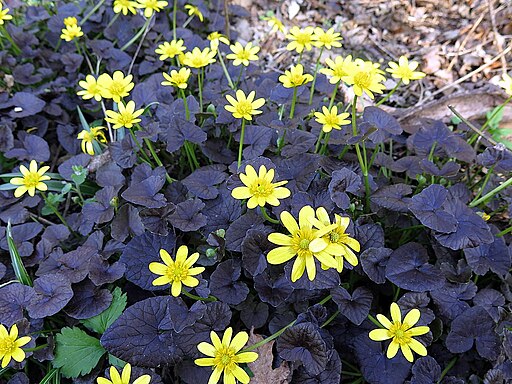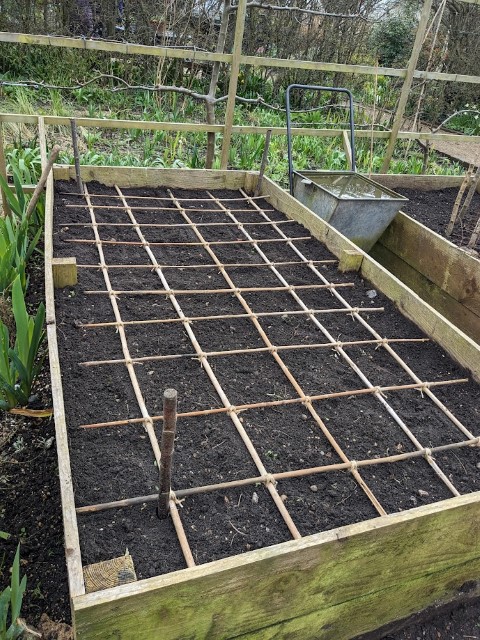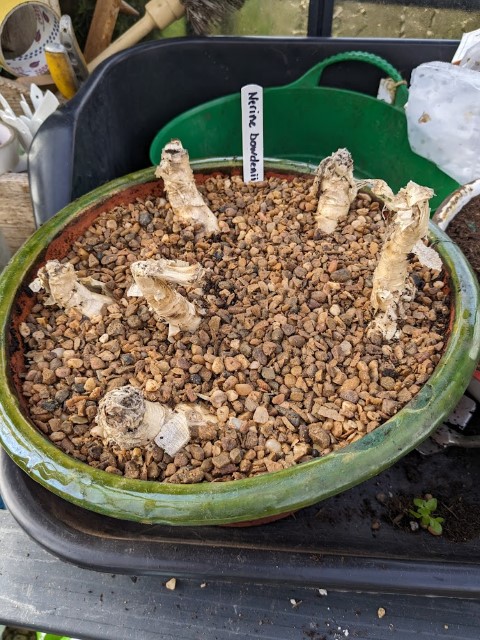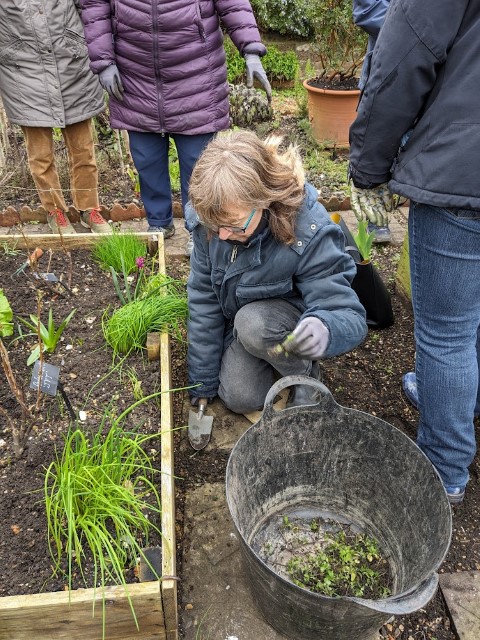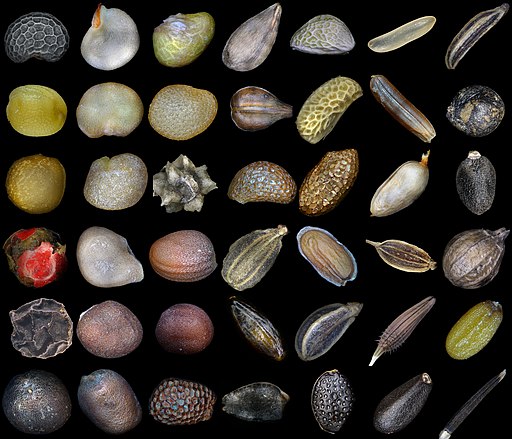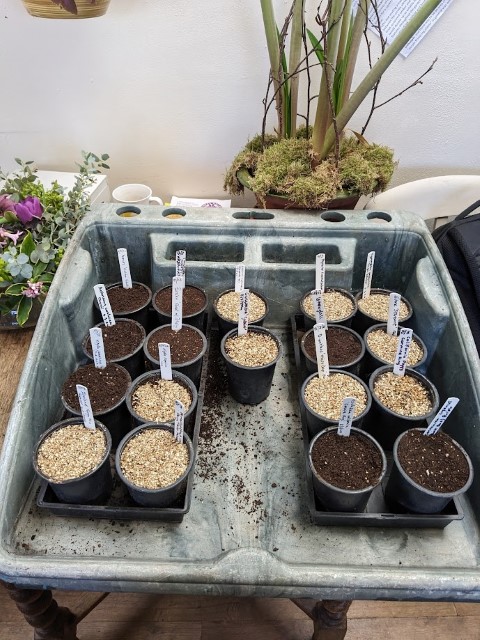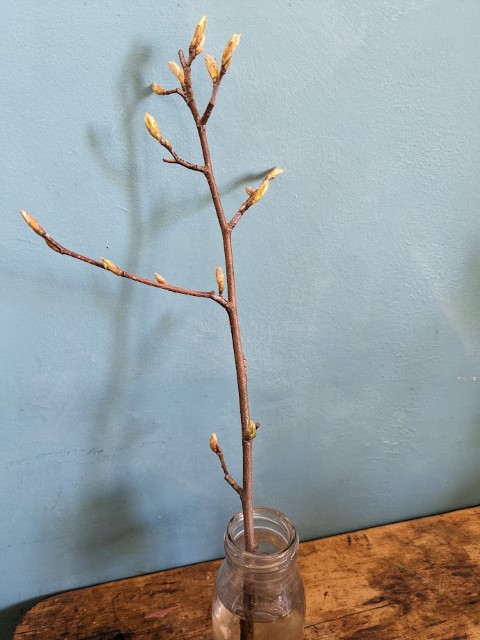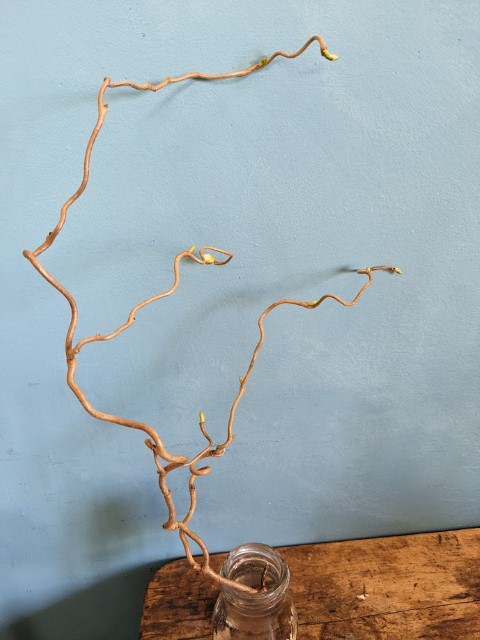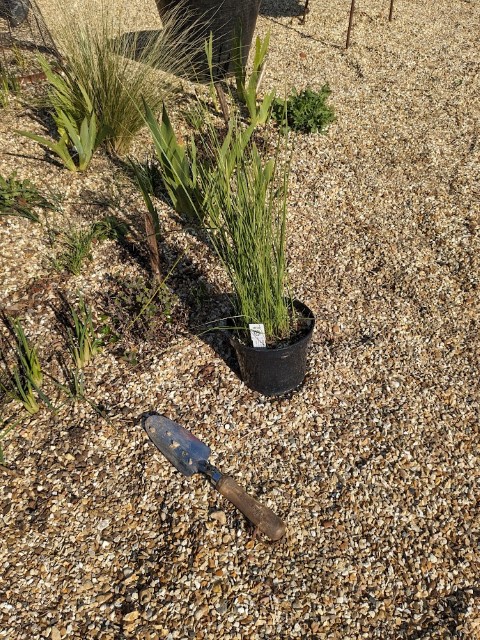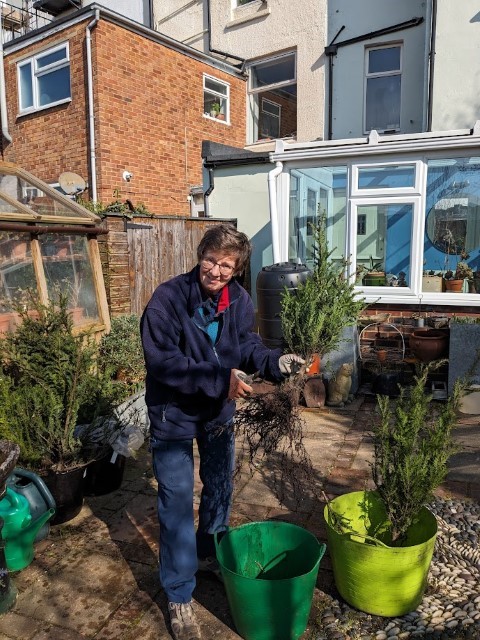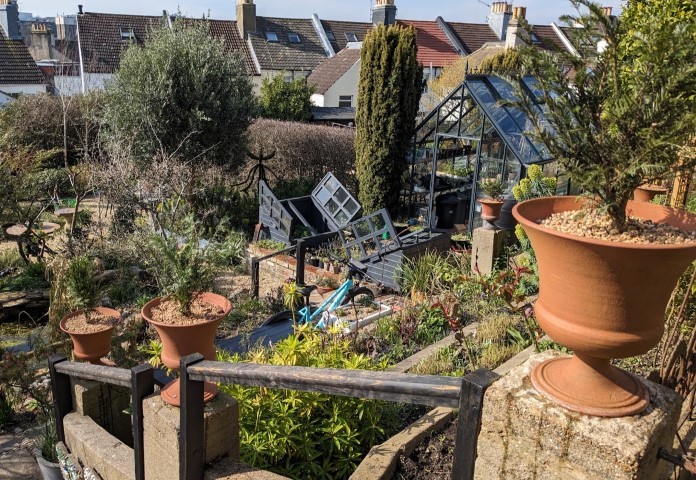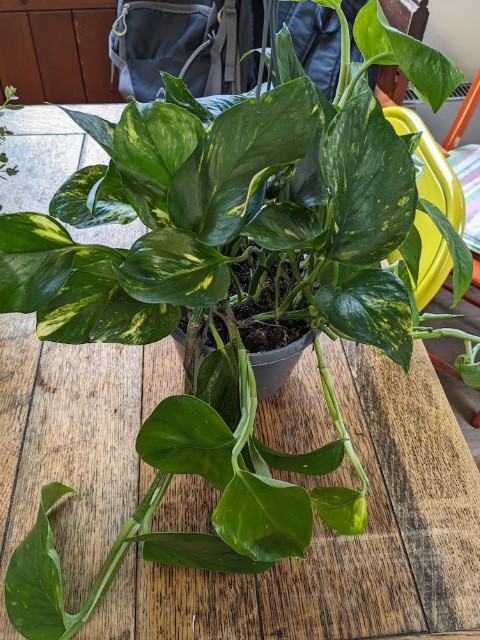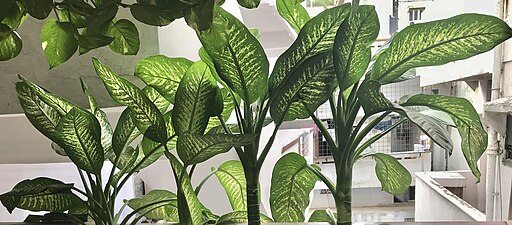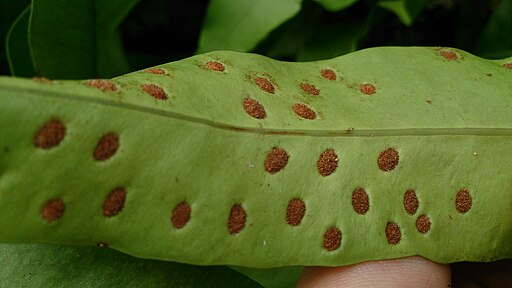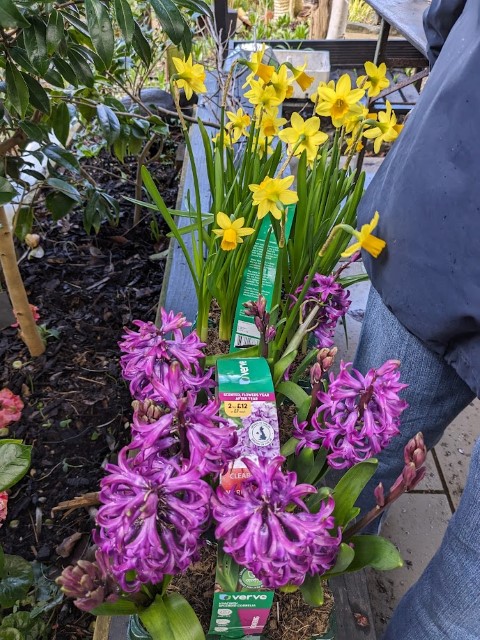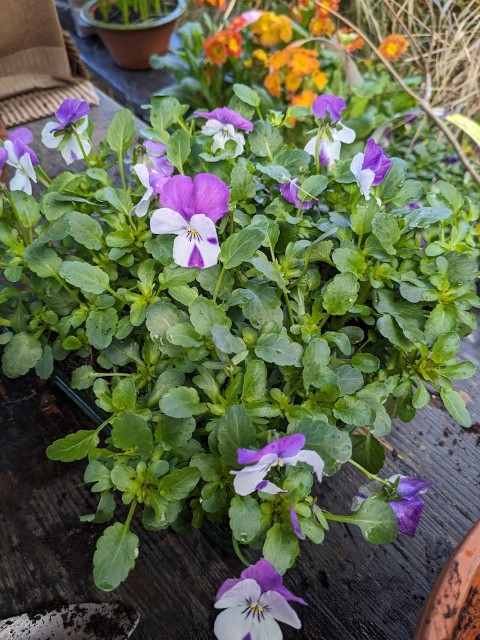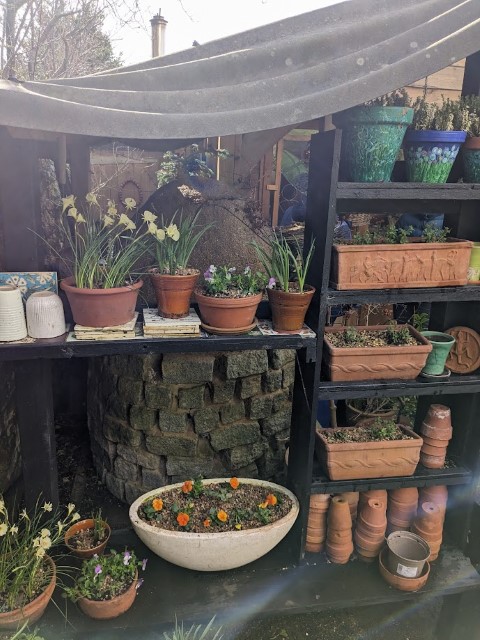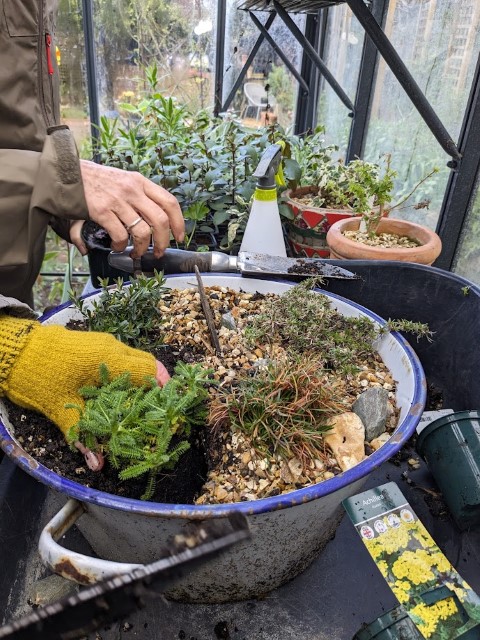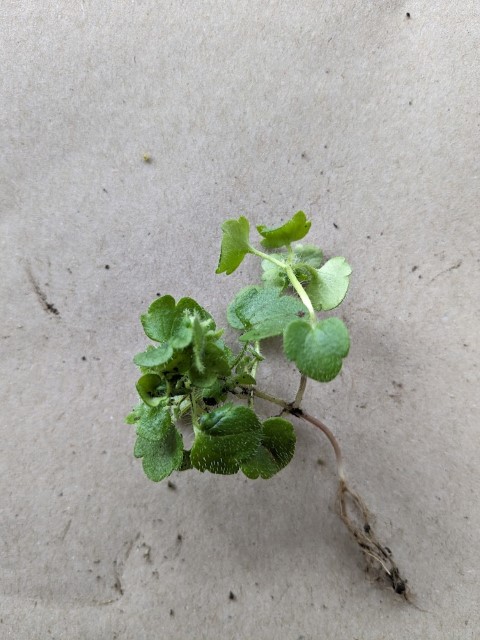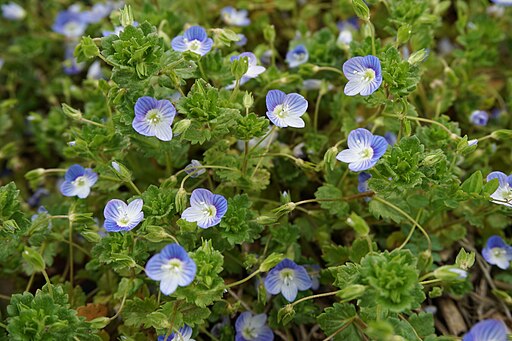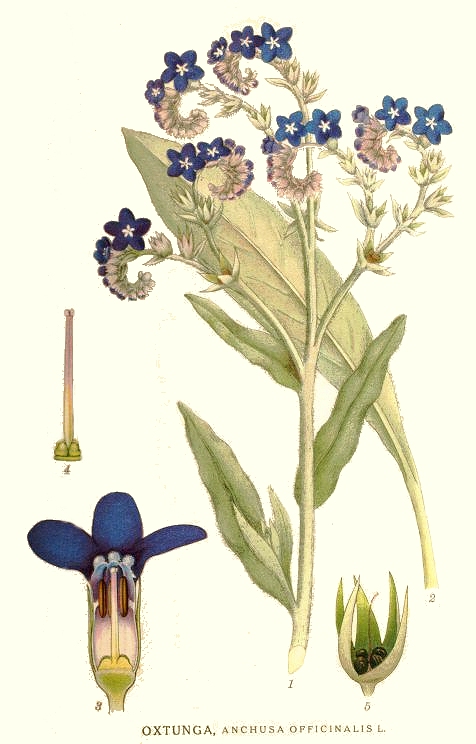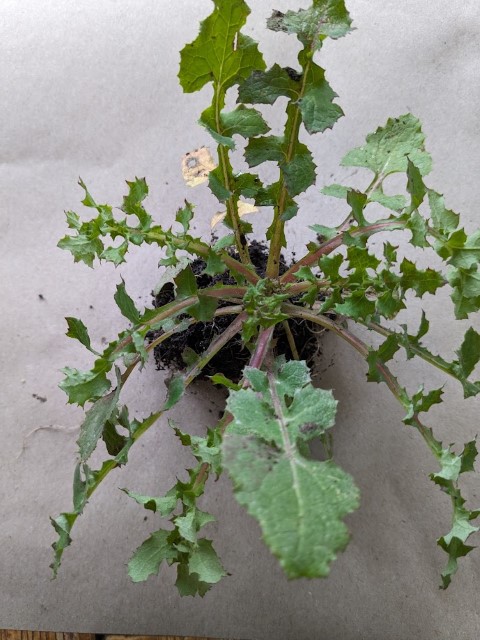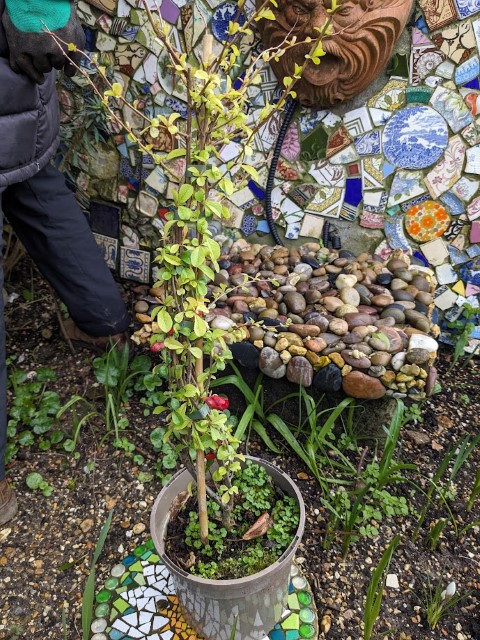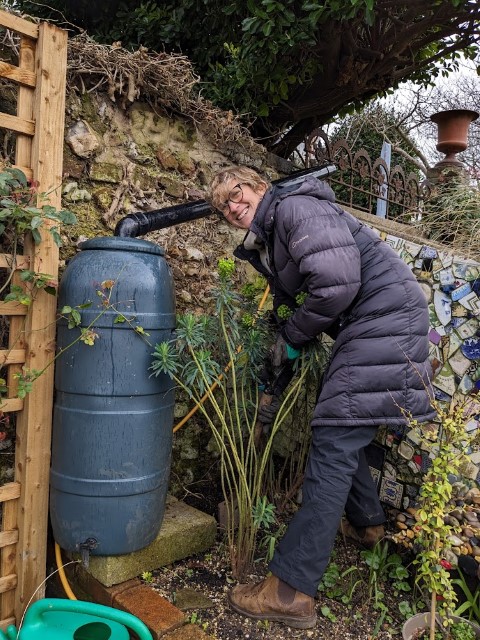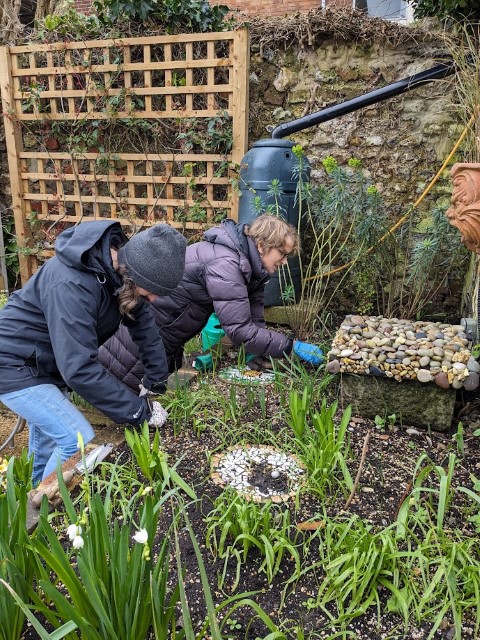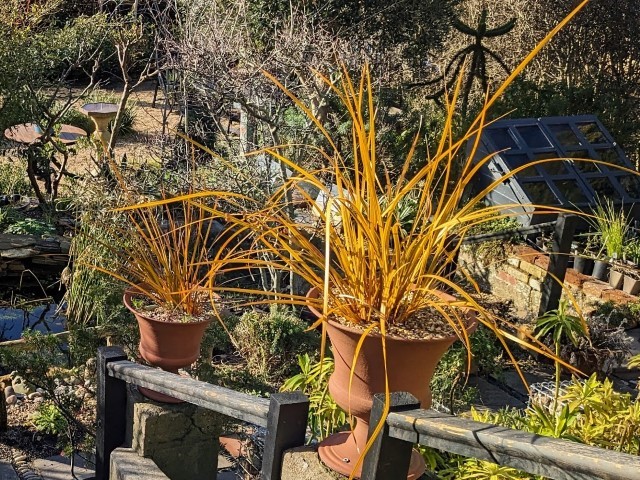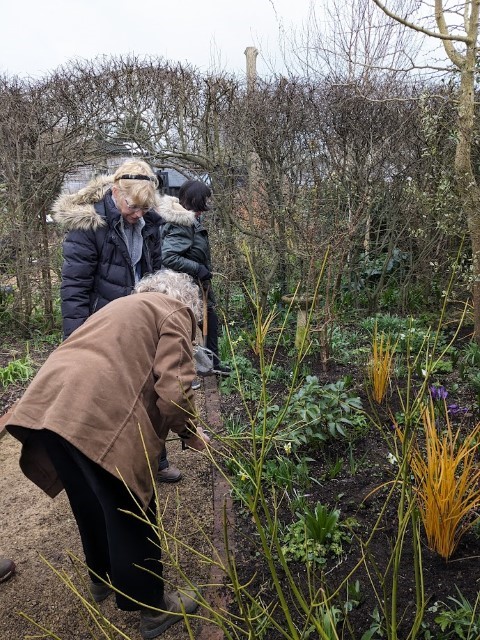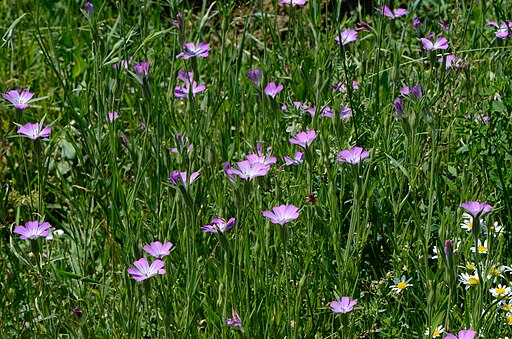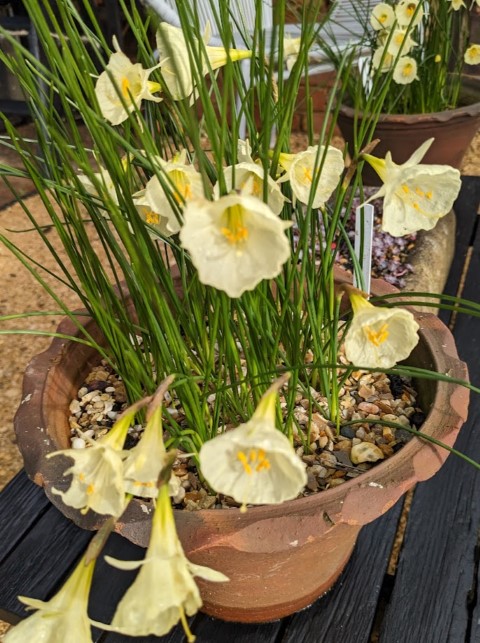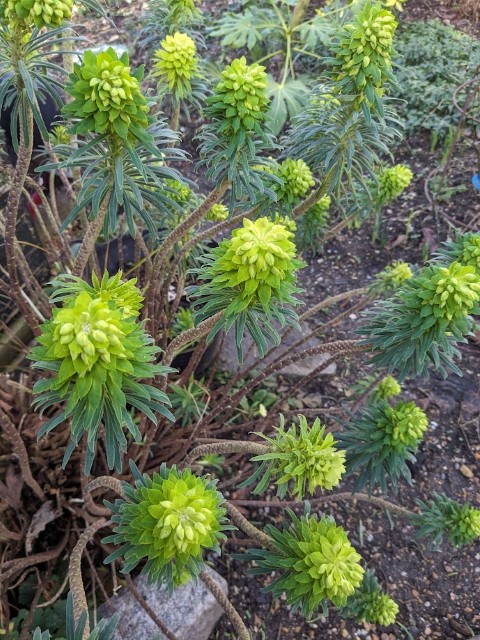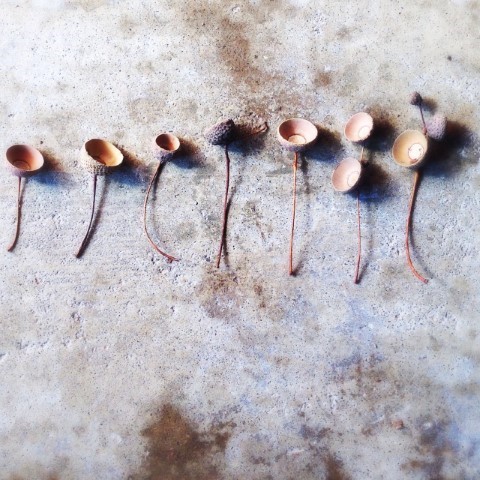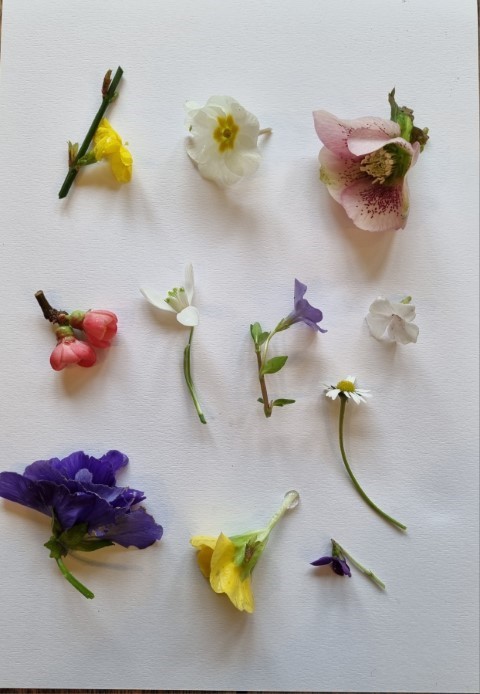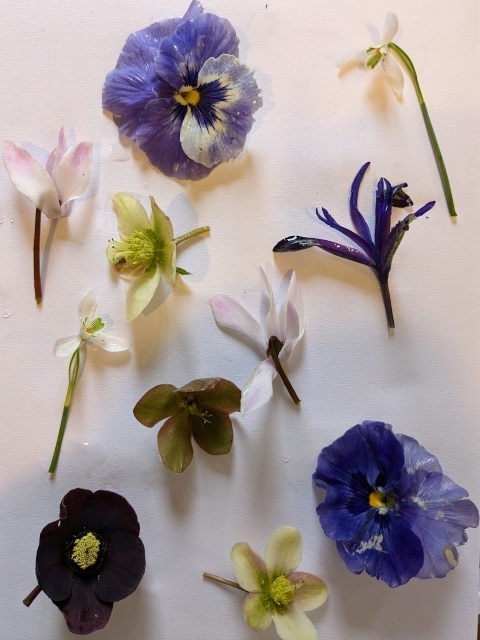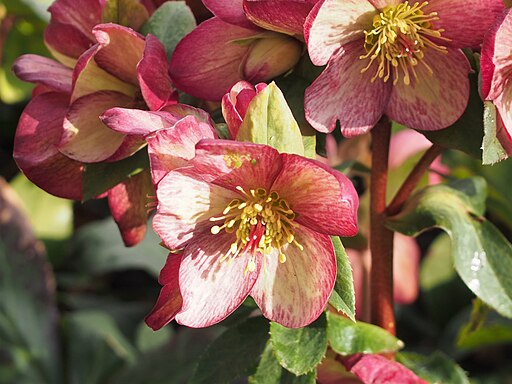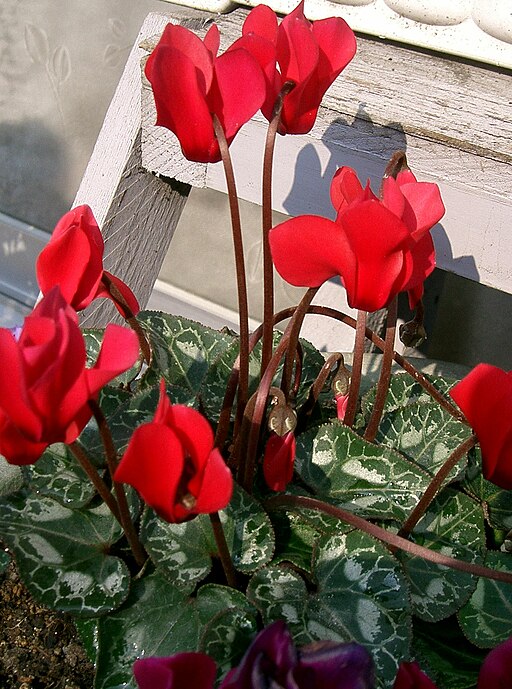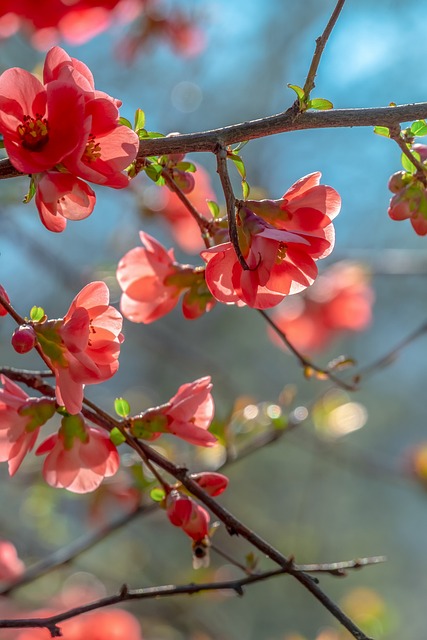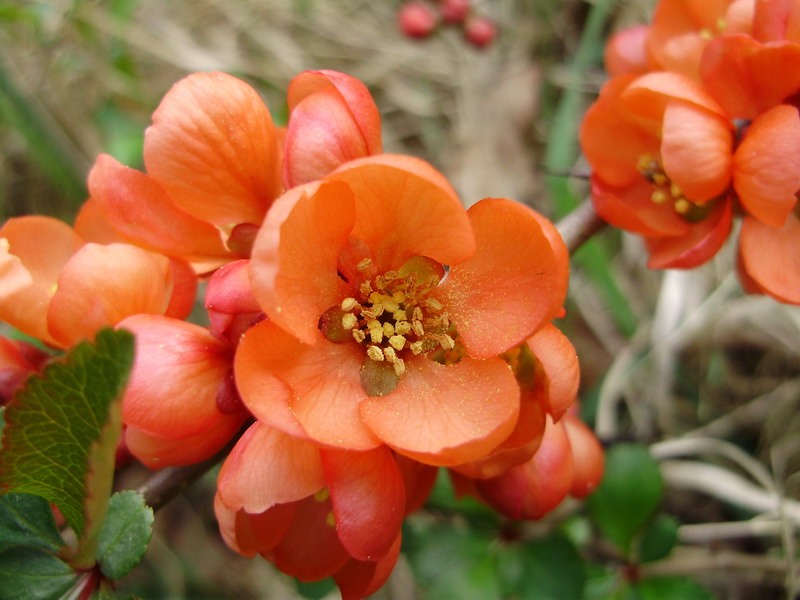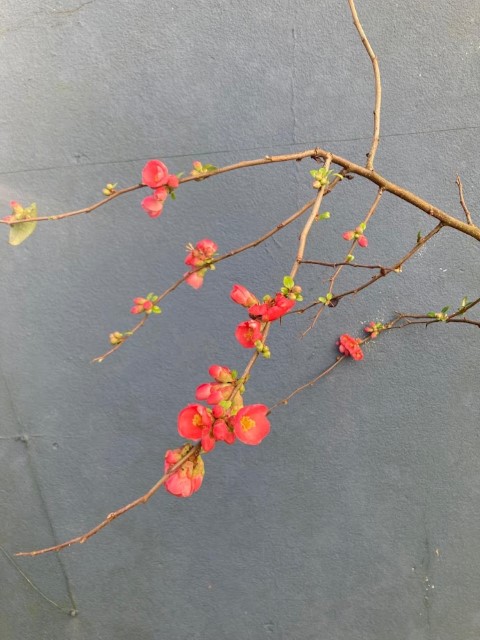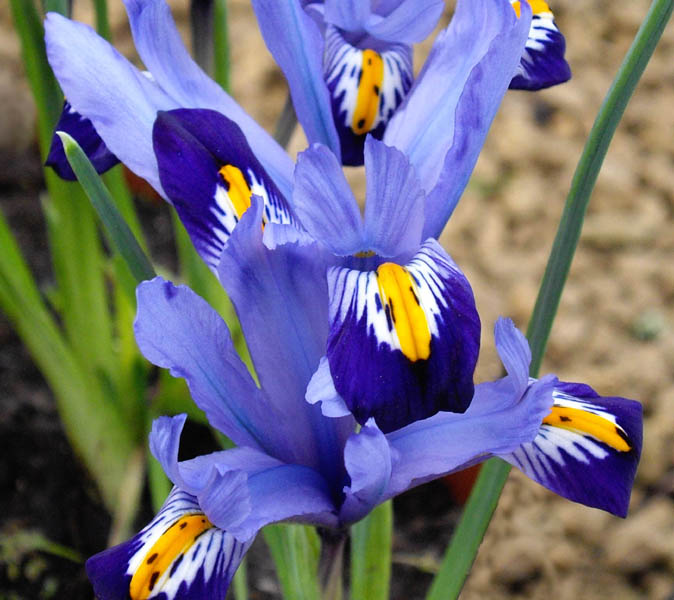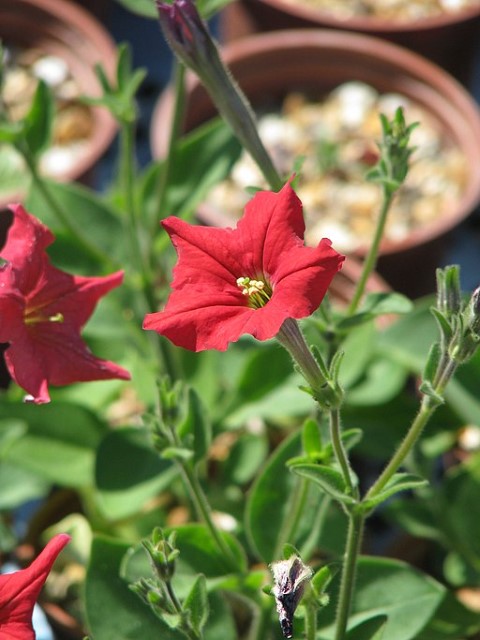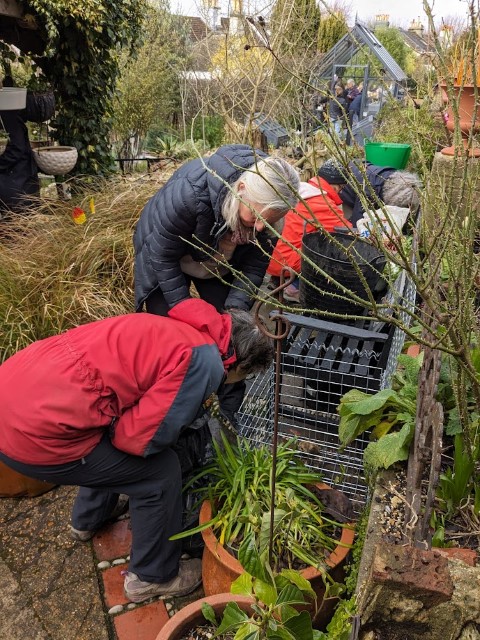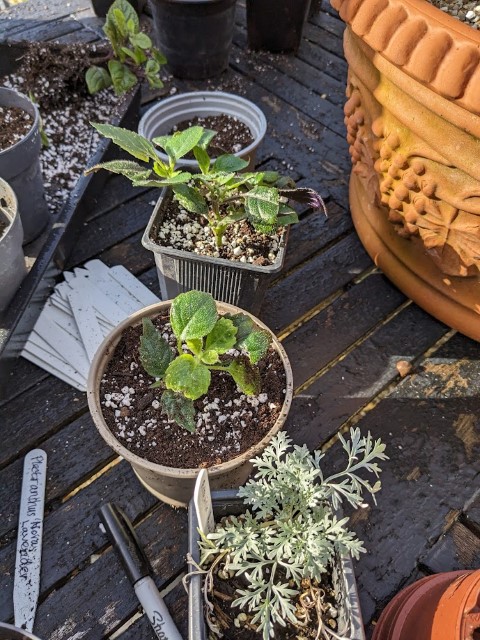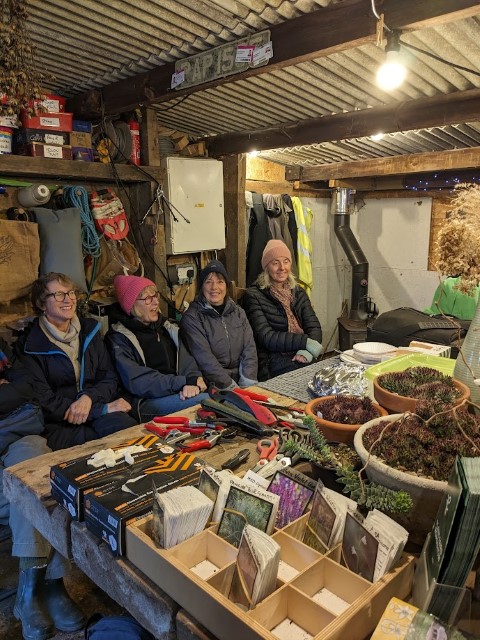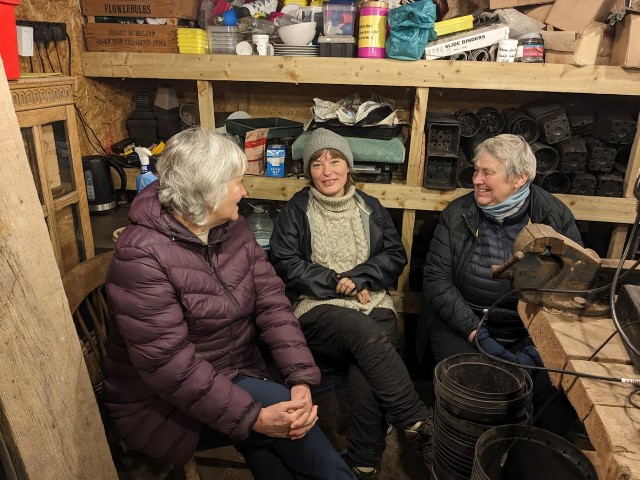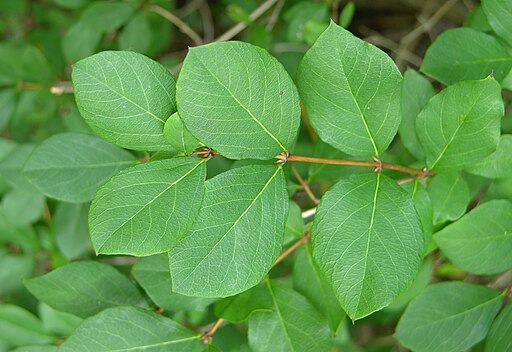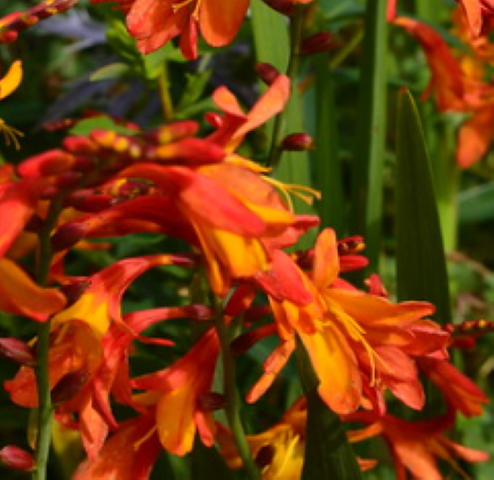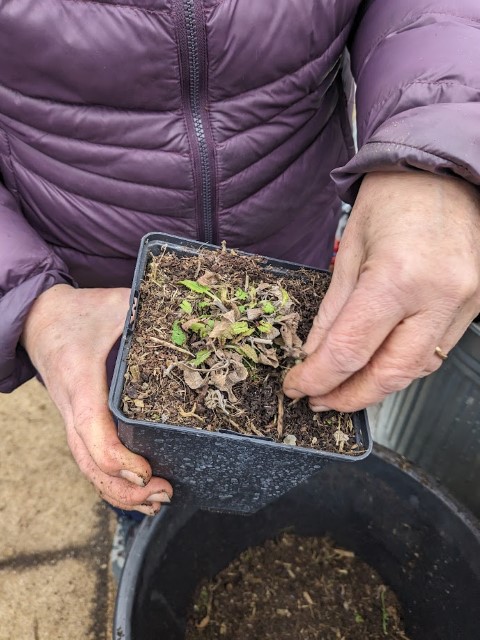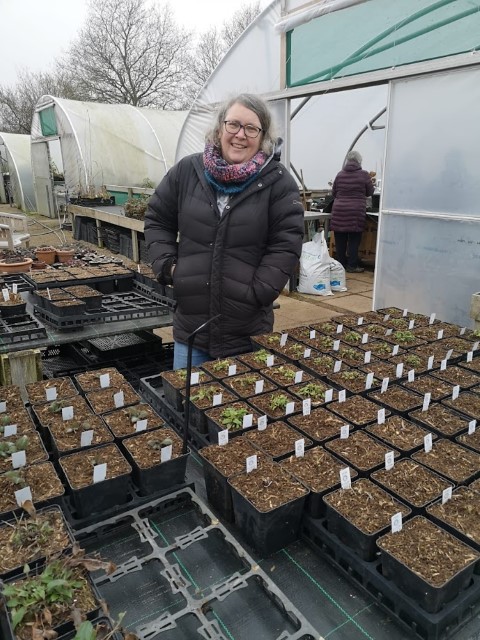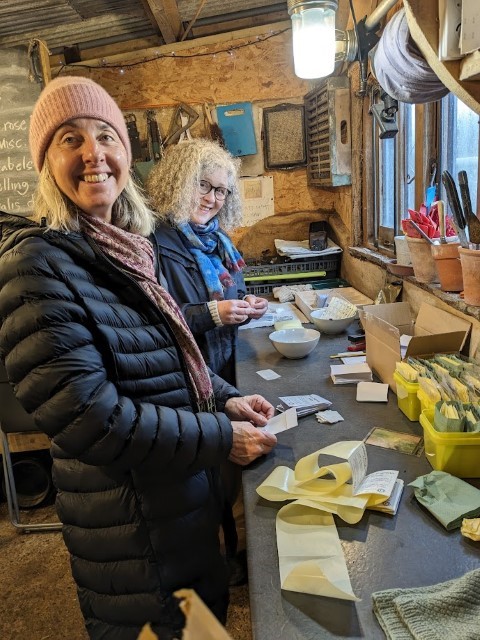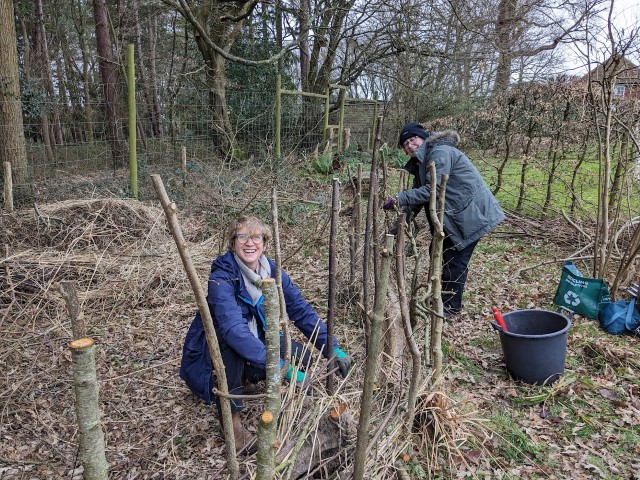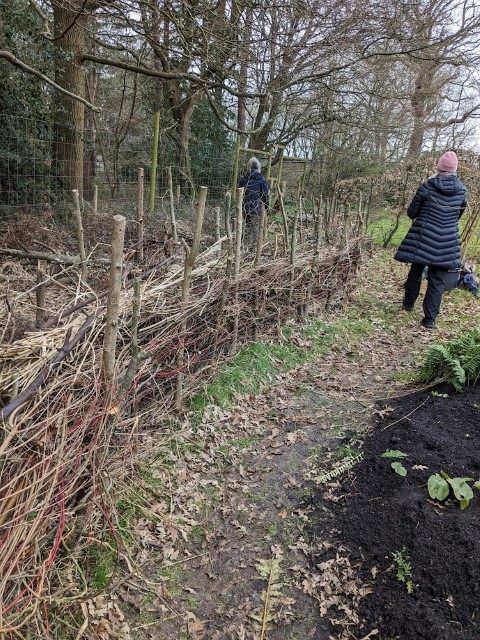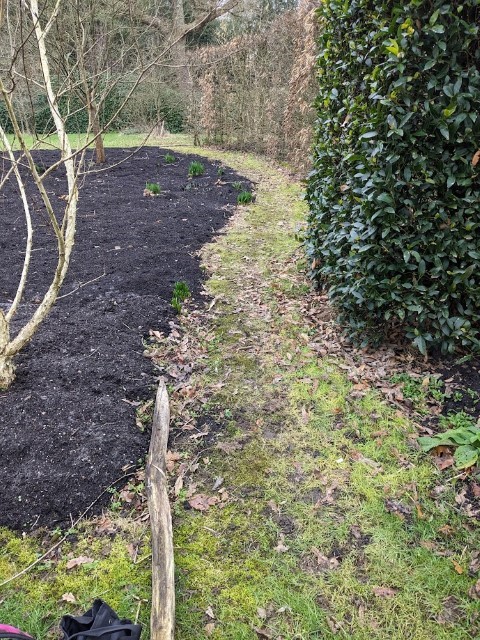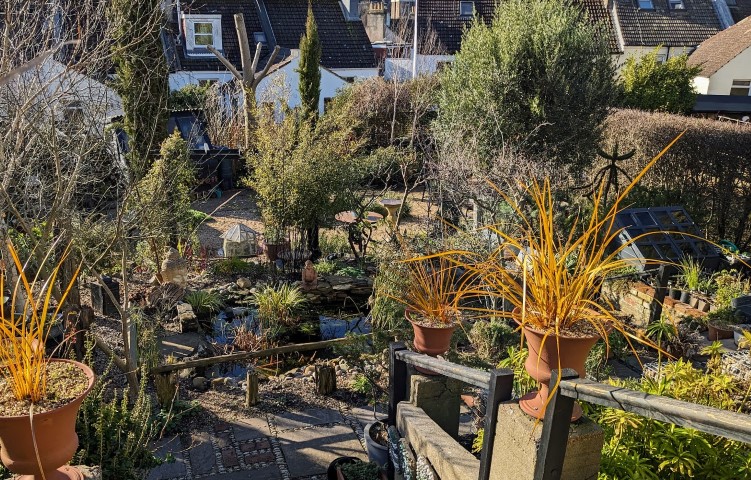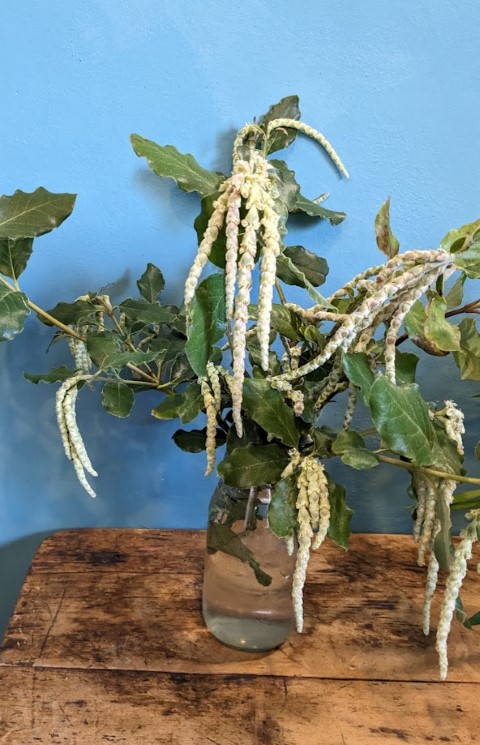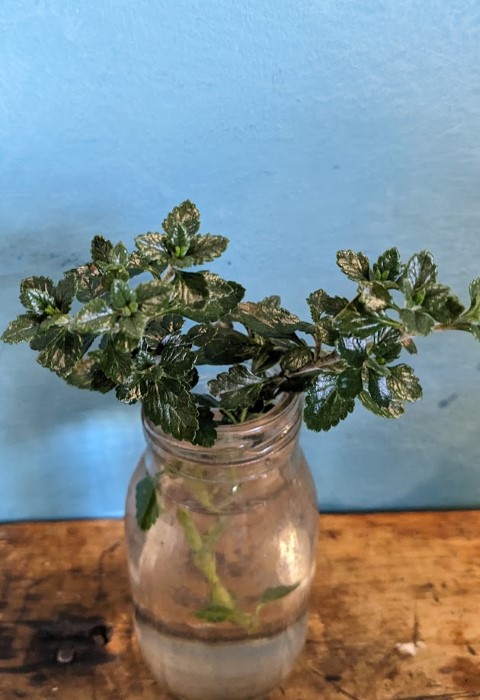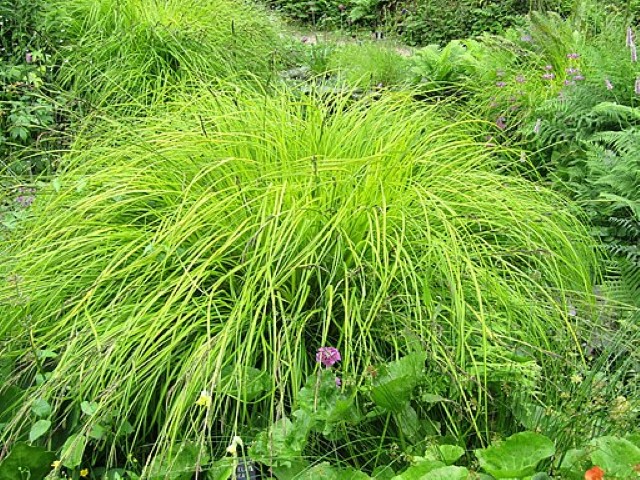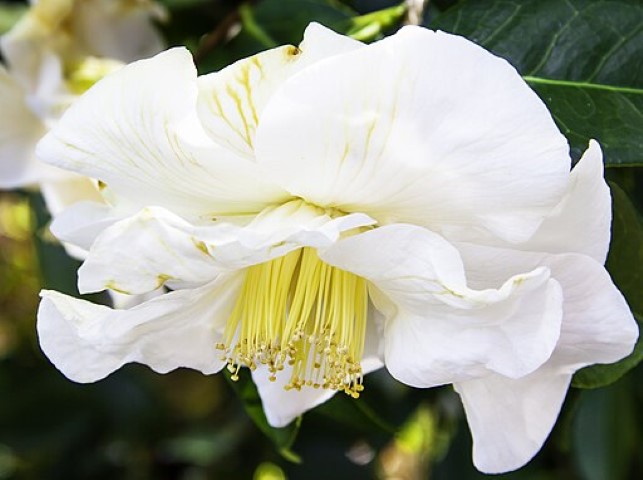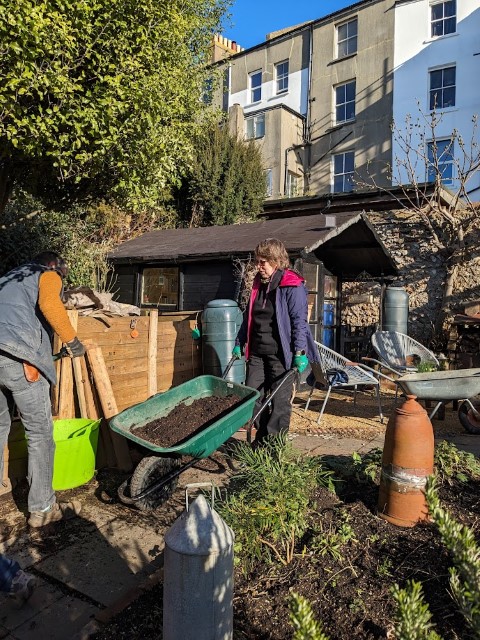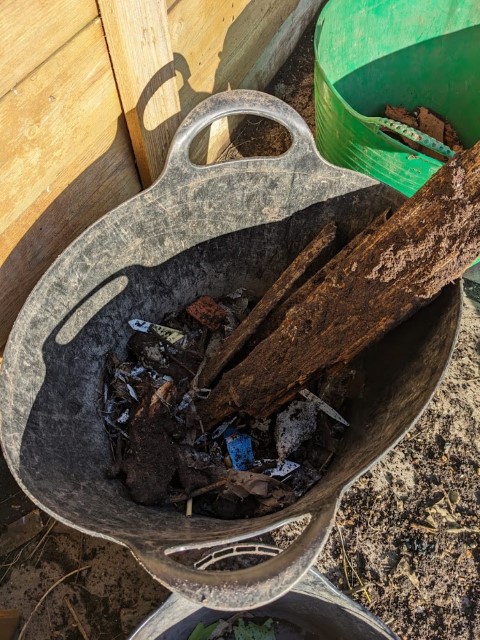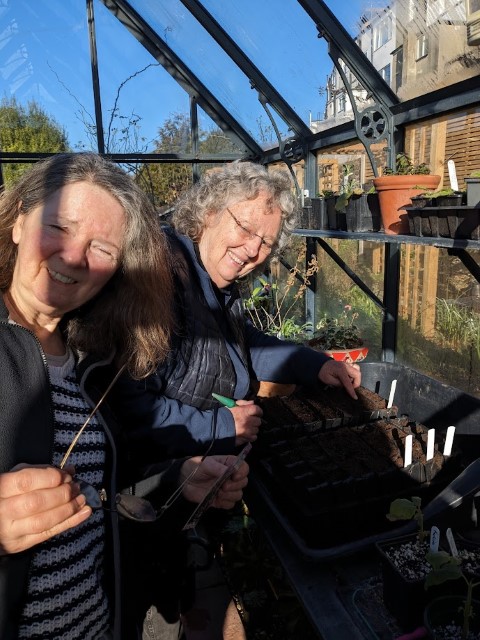


It was lovely to be back at the Garden House after what felt like too long away. It was extra exciting as the garden was opening for the National Garden Scheme. This wonderful charity has been raising money through garden visits since the 1920s and now supports a range of nursing, health and gardening charities – big and small.
There was plenty to do before the gate was opened to visitors but we started the day with our usual Friday morning routine…good strong coffee, a catch up with friends and a bit of horticulture.
Ident
The garden was looking fabulous with lots of colour from the spring flowering bulbs, especially the tulips, but these won’t last for ever and there is always a bit of a gap between spring and summer displays. Today we looked at a group of plants that are really useful – and beautiful – for filling that gap. Let’s hear it for biennials!
Britannica describes biennials as any herbaceous flowering plant that completes its life cycle in two growing seasons. They are usually sown in the summer of the first year or will appear in your garden having self-seeded. Roots and leaves develop through the summer and autumn so the plants are substantial before growth slows down over the winter. In the second year they are already off to a good start and will produce flowers by the spring. They then set seed before dying off.
Smyrnium perfoliatum
(perfoliatum – with the leaf surrounding the stem)
This wonderfully zingy plant looks a little like a Euphorbia but is in the Apiaceae family so related to angelica, carrot and parsley among many others. It has upright, strong, ribbed stems which appear to grow right through the centres of the whorled, rounded leaves which are larger and darker at the base of the plant than at the top. In its second year, open umbels of tiny yellow-green flowers are held above the foliage. This is a great plant for cutting and arranging and will also contrast well with other spring flowers in beds and borders. It seeds around readily. Likes full sun or dappled shade in a moist, well-drained soil. Ht. up to 1m.
Lunaria annua ‘Chedglow’
(Lunaria – moon-like, annua – annual. Yes, I know it’s confusing for a biennial to be called that.)
Lunaria, or honesty, are in the Brassicaceae family so related to cabbage, sprouts, kale and mustard. They have cross-shaped, or cruciform, flowers with four petals and two long and two short stamens.
The papery seed-pods are, indeed, moon-like especially when the outer layers have come off.


‘Chedglow’ has toothed, heart-shaped leaves in shades from dark green to deep purple and dark stems. The richly coloured purple-pink flowers appear in late spring and really do seem to glow, especially at twilight. The flowers will last through April and May then the seed pods develop extending the interest of the plant and eventually providing for self-seeding, for insects and birds, and for winter decorations. These were looking fab at GH this week. They like a moist, well-drained soil in full sun or partial shade. Ht. up to 1m
Lunaria annua
Common honesty was introduced from Europe some 400 years ago and being particularly popular in Victorian times. It is known for attracting bees, beneficial insects, butterflies, moths and other pollinators. It is a caterpillar food plant and has nectar/pollen rich flowers. The flowers are a little more purple than those of ‘Chedglow’, the foliage is a fresh green and it is a touch shorter. Try to keep different types apart as they may cross pollinate with the resulting plants not coming ‘true’. Ht. up to 90cm
Lunaria annua ‘Corfu Blue’
As you can see, this variety of honesty from Corfu and other Greek islands is far more blue than the others but it is also reliably perennial rather than biennial. It develops tuber-like roots and will sucker to spread as well as self-seeding. Those blue-purple flowers are held above stems and foliage that are flushed a reddish-bronze as are the seed pods. Ht. 90cm
Erysimum ‘Sugar Rush Red’
Erysimum is a genus of about 150 species of plants in the Brassicaceae family and can be annuals, herbaceous perennials or sub-shrubs. ‘Sugar Rush’ is a series of F1 hybrid biennial wallflowers which come in a range of colours and will often continue growing and flowering beyond the usual second year, becoming perennial if the conditions are right. They will also give a second flowering in autumn if cut back after the first spring flush. Confusing huh? They are sweetly scented, quick to establish and incredibly winter-hardy, and they look good planted with tulips and other spring flowering bulbs.
Erysimum ‘Bowles Mauve’
This popular, vigorous wallflower is not a biennial. It is a perennial subshrub, sometimes short-lived depending on conditions. With its narrow, dark, grey-green leaves and upright racemes of bright purple flowers it will bloom from spring through to autumn. Highly versatile, it can look great repeat planted along a path for a formal look but also more natural in a mixed border. It can become leggy after the first couple of years – trimming lightly after flowering will help. It likes a well-drained soil in full sun and is pretty drought-tolerant once established. Ht. 50-100cm after 3-5 years. RHS AGM 🏆 and shortlisted for the Chelsea Plant of the Centenary for the decade 1973-1982.
Here are two more perennial wallflowers…
Erysimum ‘Red Jep’
This one has fragrant flowers in shades of red, reddish-purple and pinky-orange carried on stout stems above lance-shaped dark green leaves. It is more compact than ‘Bowles Mauve’ growing to about 30cm.
Erysimum ‘Pastel Patchwork’
This lovely cultivar has flowers that range from soft yellow to pale orange and dusky pink. It was a hugely admired by the visitors to the garden this weekend. Ht. up to 50cm.
Jobs for the week
Plant some succulents
There was a collection of random succulents and sempervivums in the potting shed that needed to be looked over, tidied then used to propagate some new plants.


Hmm…bit of a tangle…what we need is gritty compost, good eyesight and a steady hand!
Wow, that looks like a beautiful garden in miniature.
Tidy up ‘Little Dixter’
This is the first area visitors see when they come to the Garden House so it’s good to have it spick and span. There were pots to plant up with strawberries, Hostas to wrap in slug repellent wool and some rather lovely Ranunculus to plant.



Work on the dry garden
It was mainly the pots and containers in and around the dry garden that were to be tidied, weeded and, possibly, replanted. (Even the best of gardeners is not above a few strategic purchases for some instant impact!) Then some weeding and raking of the gravel.



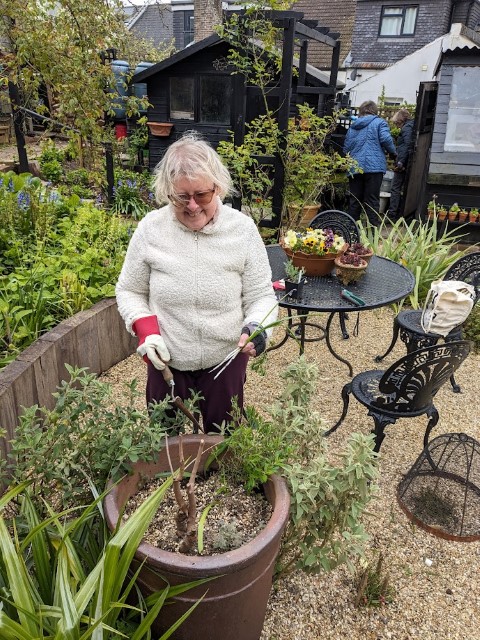
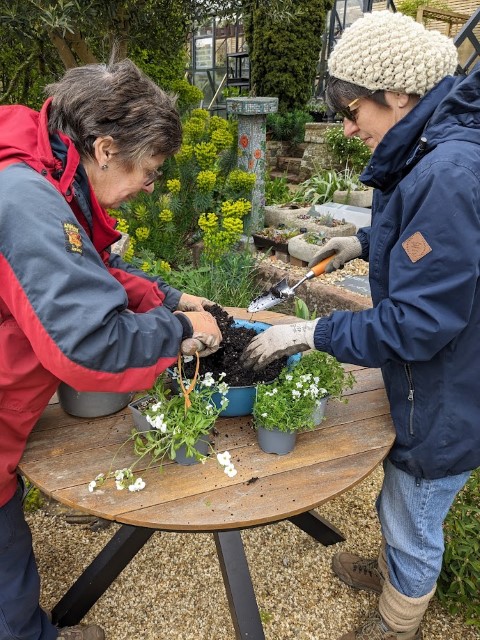
Sort out the compost heap
We’ve been away a while so the compost had to be perused and sorted. There was some lovely stuff ready to be used so it was out with the wheelbarrow and spades.


The newly ‘cooked’ compost was spread on the herb garden – looks great!
Prick out some herbs
Unlike other seedlings which are best pricked out individually, herbs can be pricked out in lumps – think about those supermarket pots which have about a hundred plants in them!
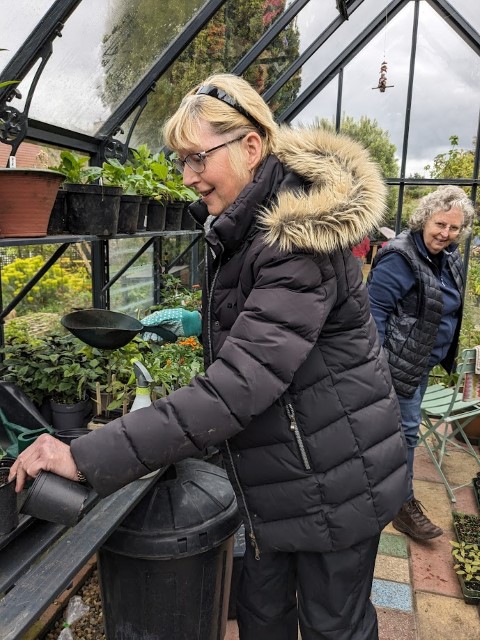

This makes the herbs easier to harvest in useful quantities when cooking. These two look very happy in their work.
Plant out sweetpeas
The bed towards the compost bins had a large teepee support waiting for some sweetpeas to be planted. First, some twine was tied around the lower part of the support to give the young plants something to cling to – they only grow well when touching, then clinging to, something they can climb up.



Within a few weeks this should be covered in beautiful blooms. Also going in this bed were some Ammi majus to add height and frothy umbels to the mix – lovely!
We then had a good tidy up but left ourselves time to have our own cake break before visitors arrived…
The cafe, Pelham Plants’ stand and the pesky pay systems were all in place…as well as Artist in Residence, Kate Osborne…



… then it was time to open the gate. Having people looking around the garden makes you see it through new eyes. Here are some pictures showing just how gorgeous the garden was looking.










It was a wonderful couple of days and over £3200 was raised for the NGS – fantastic! Well done Bridge and everyone.
See you next time.











